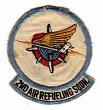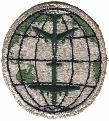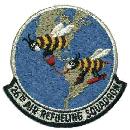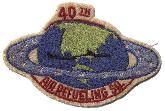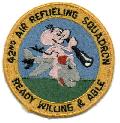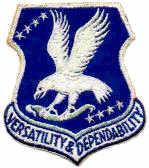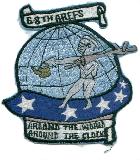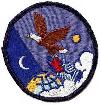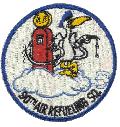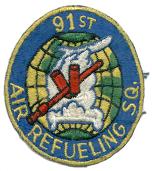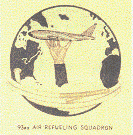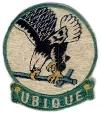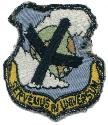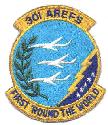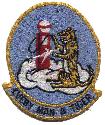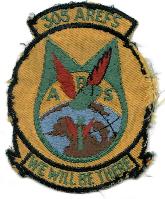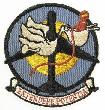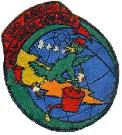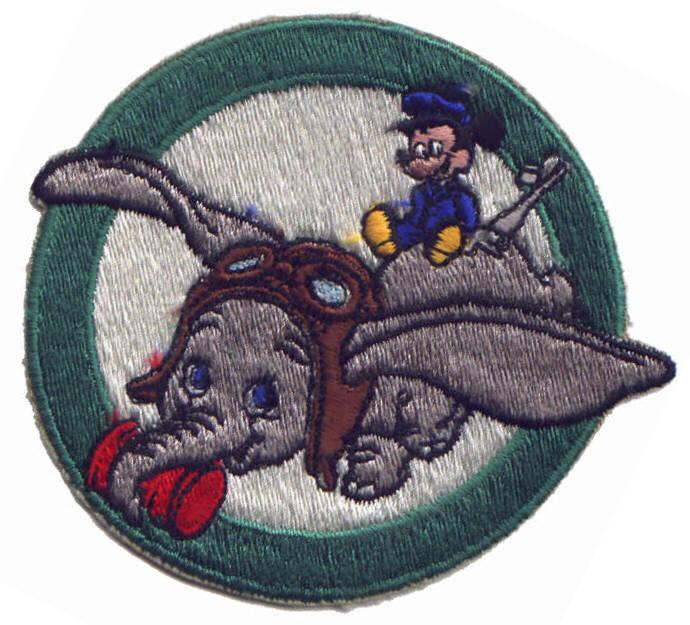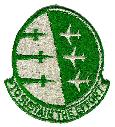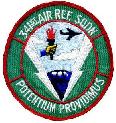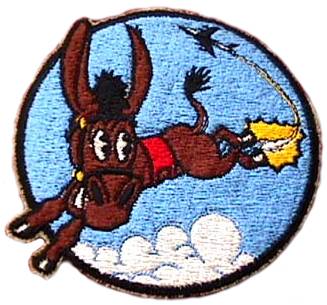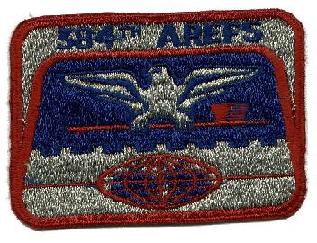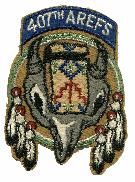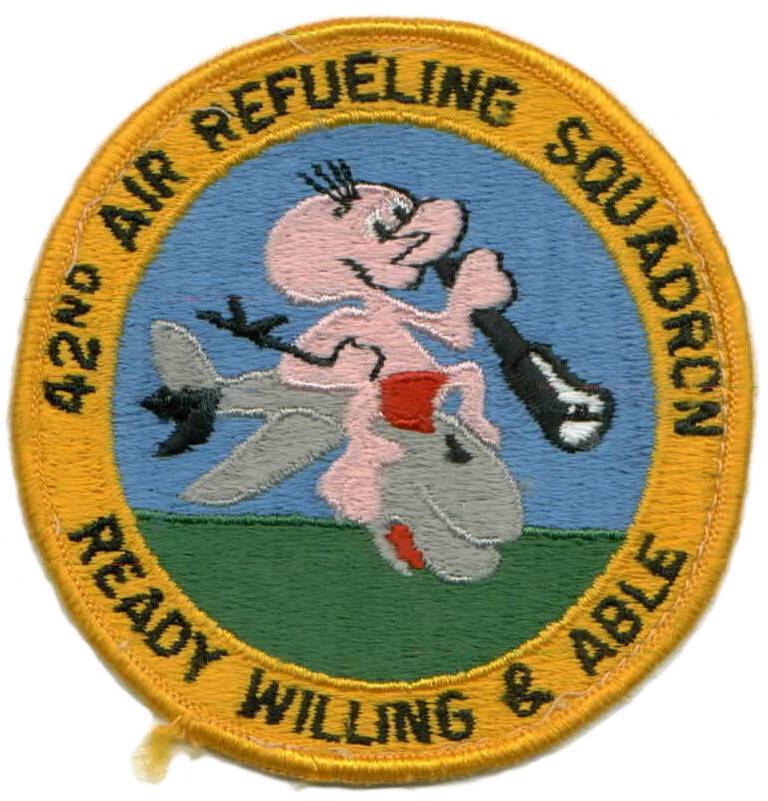
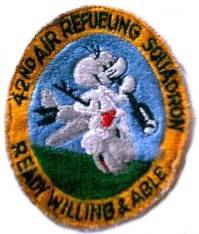
____________________________________________________________________
KC-97G
42nd Bombardment Wing (Heavy)
Limestone AFB, Maine
18 Jan 1955-57
KC-135A
42nd Bombardment Wing
Loring AFB, Maine
1957-94
____________________________________________________________________
KNOWN TAIL NUMBERS FOR THE 42nd AREFS
53-0189
53-0192
____________________________________________________________________
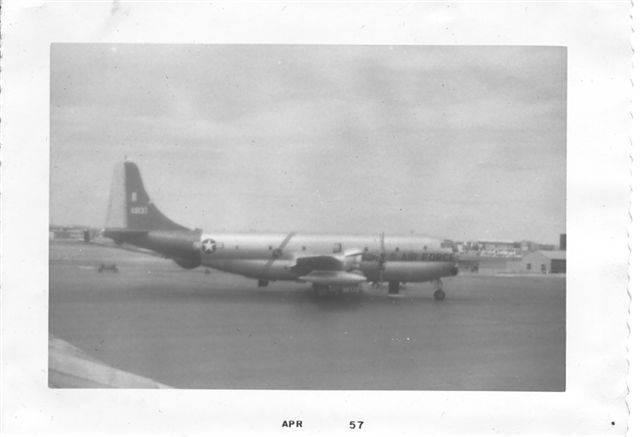
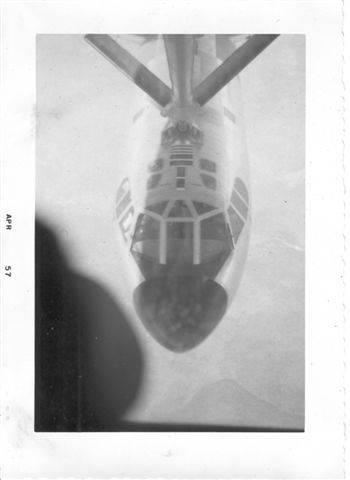
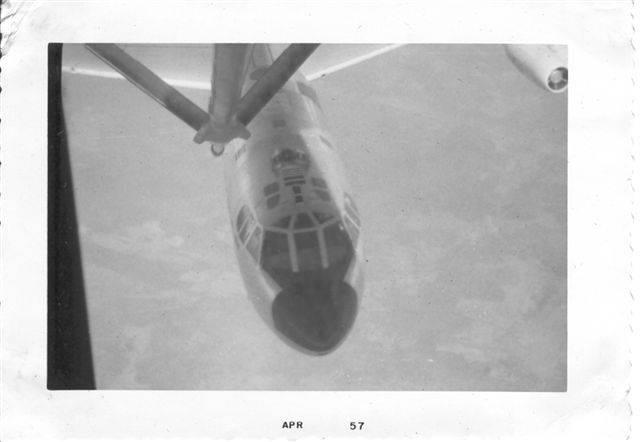
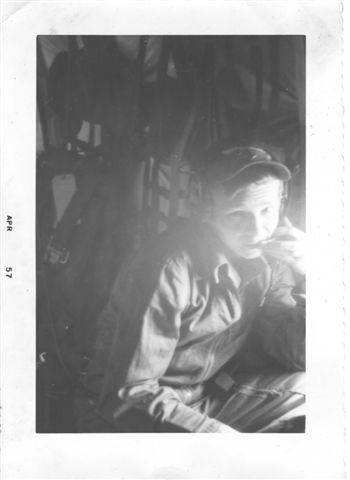
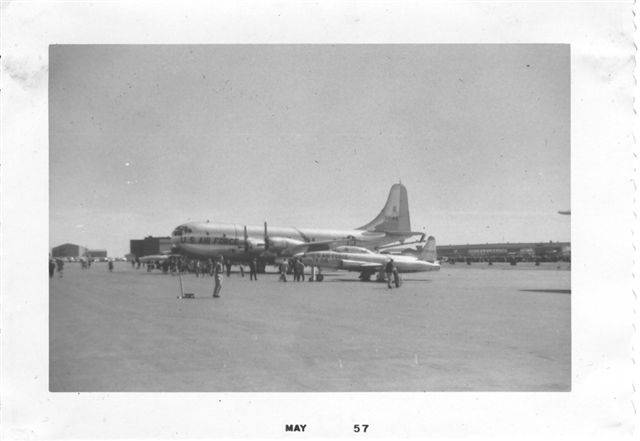
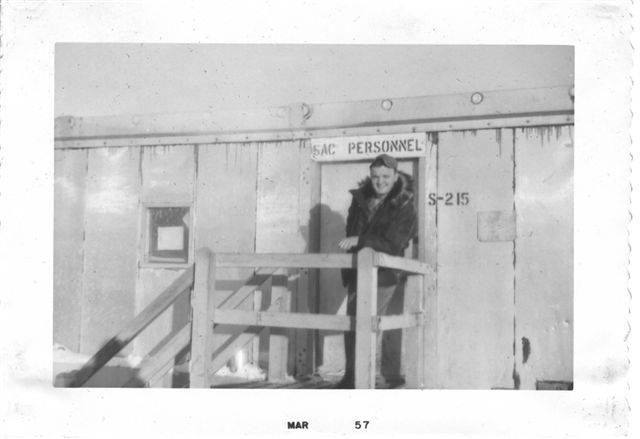
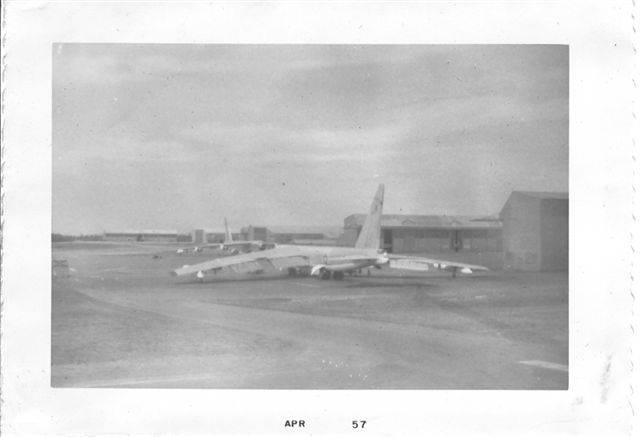
____________________________________________________________________Squadron History
On 18 January 1955, the 42nd BMW at Loring AFB, formerly know as Limestone AFB, obtained its in-flight refueling capability with the
activation of the 42nd Air Refueling Squadron. The new squadron, which would have 21 KC-97s and 30 crews, was to provide aerial
refueling to the 42nd BMW B-36s; however, since the bombers did not then possess air refueling systems, SAC and 8th AF directed
tanker flying in support of other units, an additional mission maintained today. The first KC-97G arrived on 15 February 1955 and was
followed by six more in the next four days. The 42nd AREFS received another 14 in March, bringing the total to 21. On March 8, the new
squadron completed its first in-flight refueling mission. The squadron conducted its first major in-flight refueling mission in April in
support of the 303rd and 43rd Bomb Wings. On 27 April, the 42d deployed for the first time, flying 11 KC-97s to refuel bombers and
recover at Ernest Harmon AB, Newfoundland, where they operated for six days. In November, the entire 42AREFS deployed in 20
KC-97s to Thule AB, Greenland, for a 60-day tour of duty taking a total of 485 personnel. Operating from this forward location, the
squadron provided daily refueling support to SAC Airborne Alert Aircraft overlying Thule. The squadron returned to Loring on 28
December 1955. In 1957 the 42d AREFS joined the jet age, exchanging its piston-engined KC-97s for brand new KC-135
Stratotankers. Conversion planning began in January when SAC informed the wing officials of the impending July transfer of their
KC-97s to the 831st Air Refueling Squadron at Malstrom AFB, Montana. Supposedly, new KC-135s would begin arriving in August with
a full complement of 20 tanks promised by year's end. The KC-97s began leaving in July according to plan; however, the wing did not
receive its first KC-135 until October. By December 31, only two had arrived. Major Willie H. Sonntag, Commander of the 42AREFS,
landed the first KC-135, number 140, at Loring on 16 October. During the ceremonies that followed , his wife christened it the
"Aroostook Queen." Two months later, the last KC-97, number 3192, departed Loring, making the 42BMW the first all-jet,
bomber-tanker, combat unit in SAC. In June 1958, 42AREFS KC-135s assumed alert status in support of the wing's B-52, a
commitment which continues today. In 1959, the 42 AREFS began forward alert operations at Goose Bay AB, Canada, another
Squadron first. In October of 1961, the 42d won its first golden boom award as the best AREFS in Eight Air Force. After several
years of support Loring's nuclear deterrent, the 42d was called into aerial action during a period of international tension. In 40 days
during the 1962 Cuban Missile Crisis, the 42AREFS accomplished 214 refueling missions, transferring 23,757,000 pounds of fuel to
airborne alert B-52s. Resuming its winning tradition, the 42d won the 8AF Golden Boom Award three consecutive times in 1963-1964.
Topping that achievement, the 42d brought home the Saunders Trophy as the best AREFS in SAC for two straight years, 1964 and
1965. A portions of that excellence had been demonstrated in Southeast Asian Combat, where the 42d had begun sending crew and
aircraft in October 1964. Forty-two 42d crews had served with the "Young Tiger" tanker task force by January 1969, and the
squadron continued its support into the 1970s. Throughout the 1970s into the 1980s the squadron maintained its SIOP Alert
commitment while temporarily supplying crews and aircraft to support worldwide tanker task force operations. The OPEC Oil Embargo
and denial of landing rights to U.S. aircraft which followed the October 1973 Arab-Israeli War underscored the importance of
in-flight refueling to National Security. The 42AREFS, with its location astride the shortest air routes to Europe, became even more
important as an instrument of National Policy as more and more aircraft were equipped with in-flight refueling receptacles. By 1983
and 1984 approximately 50 per cent of the squadron's sorties supported transatlantic traffic. Perhaps the most dramatic even in the
42AREFS's history was on just such an ocean crossing. An F-4E fighter aircraft enroute to Germany was rescued from certain crash
and crew death by 42AREFS Crew E-113 who towed the stricken aircraft to safety. In recognition of their extraordinary airmanship,
the crew was awarded the Mackay Trophy for the "Most Meritorious" USAF flight of 1983, the Kalberer Trophy for the "Most
Outstanding Single Feat of Military Airmanship" by a SAC crew, and decorated with Distinguished Flying Crosses and air Medals.
Flexibility, superior airmanship, and mission accomplishment in worldwide air refueling operations are the legacy of the 42AREFS. Her
crews stand "Ready, Willing, and Able" today.
The following was written by Tom Campbell who was a Boom Operator in the 42nd AREFS.
Note by the editor:
The above was the official history and it was given to me when I arrived at the Squadron in December 1988. I left in 1992 and during
that time a few things happened. The squadron provided support for the military operation in Panama. I am not sure of how many crews
and aircraft were deployed. The 42AREFS and the 407AREFS (sister squadron) were converted from KC-135A models to KC-135R in
1989. The conversion took around 12 months.
Then Desert Shield, Desert Storm and Desert Calm ensued. We deployed to Ladges Airfield, Azores supplying all aircrew and aircraft
for the first three weeks of the Air Bridge. We then had personnel deployed to France, Egypt, Saudi Arabia, Oman, and Diego Garcia.
At times during the Desert Deployments the only aircraft that were flyable at home station were pulling SIOP Alert. Training ground
to a halt. Probably the most memorable event that occurred during the deployments was in Diego Garcia. A KC-10 Extender had run low
on fuel during its return. It had given extra gas to the B-52 which was headed to Iraq for a bombing mission. When the KC-10 arrived
at Diego Garcia there were very heavy rain showers over the airfield. The visibility was almost zero. The KC-10 crews flew three
approaches, trying to land but were unable to. The Strip Alert KC-135 Crew were called in to get ready to take off. They were not
asked to, but they launched their KC-135R in nearly zero visibility so that they could refuel the KC-10. Their mission was successful
and both aircraft landed without incident. Each of the four crew member were award with the Air Medal for their outstanding
airmanship.
After, Desert Storm ended the Squadron continued to supply aircraft and crews to the region until its deactivation. During the war,
everyone had asked to discontinue alert to free up aircraft, but to no avail. But then shortly after Desert Storm ended SIOP alert
was stopped. I was on alert that night they called us and know one could be believe it. It seems the famous SAC Commander Curtis
LeMay died in 1992 (I think) and it wasn't long afterwards that the SIOP was reduced to paperwork. It is interesting to note that
just 10 years earlier Loring AFB KC-135 and B-52 crews where in restricted (heighten posture) alert for around 400 days.
I am not sure of the Unit's deactivation date but it was in late 1993 or early 1994. Loring AFB had been put on the Closure List by the
Base Closure Committee. The aircraft were dispersed throughout the Bases and most of the personnel went to Plattsburg AFB (which
closed two years later) The closing commander was Lt. Col. Robert Boot.
Many men gave their lives while serving the Air Force at Loring. I don't not even know of all the KC-135 crashes as Loring but I do
know of one. It created a huge impact on our units at the time. May those men's family feel pride of the fact that their loved ones died
serving their country.
The legacy of the 42d lives on though. Squadron stickers can still be found at bases around the world and the personnel of the 42d
shine through where ever they are. We are still "Ready, Willing, and Able".
____________________________________________________________________









